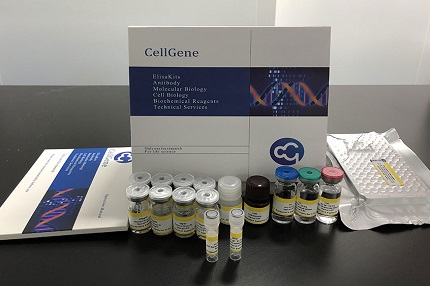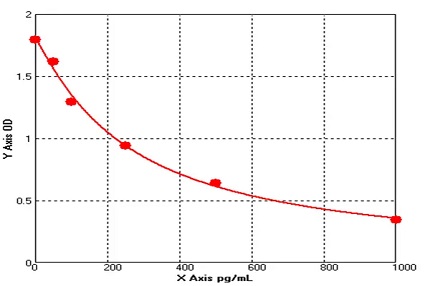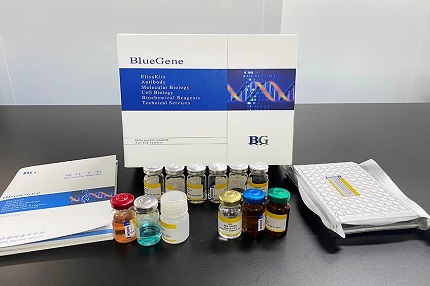E03P0668 Mouse Protein Kinase C ELISA kit
The Mouse Protein Kinase C ELISA kit can be used to identify samples from the mouse species. Protein Kinase C can also be called PKC.


E03P0668 Mouse Protein Kinase C ELISA kit
The Mouse Protein Kinase C ELISA kit can be used to identify samples from the mouse species. Protein Kinase C can also be called PKC.
Product Information | |
Cat. No. | E03P0668 |
Product Name | Mouse Protein Kinase C ELISA kit |
Species | Mouse |
Product Size | 48 Tests / 96 Tests |
Concentration | 0.5-10ng/ml |
Sensitivity | 0.1ng/ml |
Principal | Competitive ELISA |
Sample Volume | 100 ul |
Sample Type | Serum, plasma, cell culture supernatants, body fluid and tissue homogenate |
Assay Time | 90 minutes |
Platform | Microplate Reader |
Conjugate | HRP |
Detection Method | Colorimetric |
Storage | 2-8°C |
Kit Components | ||
MATERIALS | SPECIFICATION | QUANTITY |
MICROTITER PLATE | 96 wells | stripwell |
ENZYME CONJUGATE | 6.0 mL | 1 vial |
STANDARD A (0.5mL) | 0 ng/ml | 1 vial |
STANDARD B (0.5mL) | 0.5 ng/ml | 1 vial |
STANDARD C (0.5mL) | 1.0 ng/ml | 1 vial |
STANDARD D (0.5mL) | 2.5 ng/ml | 1 vial |
STANDARD E (0.5mL) | 5.0ng/ml | 1 vial |
STANDARD F (0.5mL) | 10 ng/ml | 1 vial |
SUBSTRATE A | 6 mL | 1 vial |
SUBSTRATE B | 6 mL | 1 vial |
STOP SOLUTION | 6 mL | 1 vial |
WASH SOLUTION (100 x) | 10 mL | 1 vial |
BALANCE SOLUTION | 3 mL | 1 vial |
Principle of the Assay |
PKC ELISA kit applies the competitive enzyme immunoassay technique utilizing an anti-PKC antibody and a PKC-HRP conjugate. The assay sample and buffer are incubated together with PKC-HRP conjugate in pre-coated plate for one hour. After the incubation period, the wells are decanted and washed five times. The wells are then incubated with a substrate for HRP enzyme. The product of the enzyme-substrate reaction forms a blue colored complex. Finally, a stop solution is added to stop the reaction, which will then turn the solution yellow. The intensity of color is measured spectrophotometrically at 450nm in a microplate reader. The intensity of the color is inversely proportional to the PKC concentration since PKC from samples and PKC-HRP conjugate compete for the anti-PKC antibody binding site. Since the number of sites is limited, as more sites are occupied by PKC from the sample, fewer sites are left to bind PKC-HRP conjugate. A standard curve is plotted relating the intensity of the color (O.D.) to the concentration of standards. The PKC concentration in each sample is interpolated from this standard curve. |
Coefficient of Variance | Intra Variation% <10% | |
Inter Variation% <12% | ||
Recovery | 95-102% | |
Linearity | Diluent Ratio | Range % |
1:2 | 93-105 | |
1:4 | 88-106 | |
1:8 | 86-108 | |
Specificity/Cross-reactivity | No significant cross-reactivity or interference between PKC and analogues was observed. | |




E03P0668 has been referenced in the below publications:
Quercetin and lithium chloride potentiate the protective effects of carvedilol against renal ischemia-reperfusion injury in high-fructose, high-fat diet-fed Swiss albino mice independent of renal lipid signaling.
Carvedilol protects against hepatic ischemia/reperfusion injury in high-fructose/high-fat diet-fed mice: Role of G protein-coupled receptor kinase 2 and 5.
Related Bluegene Biotech Products



